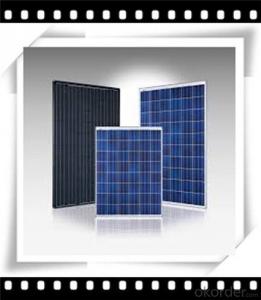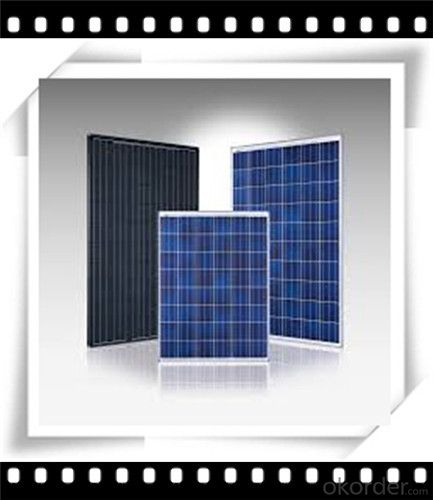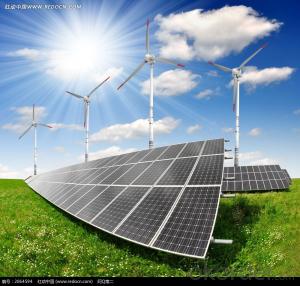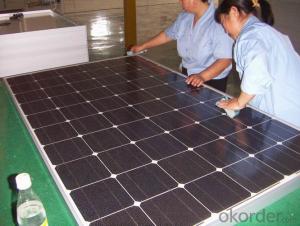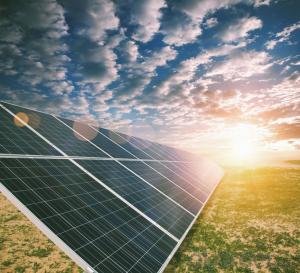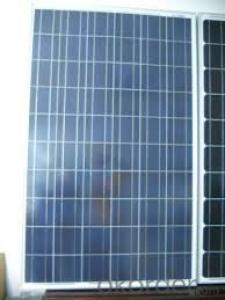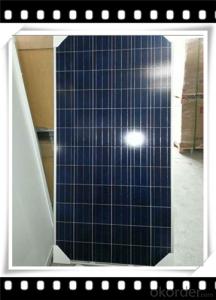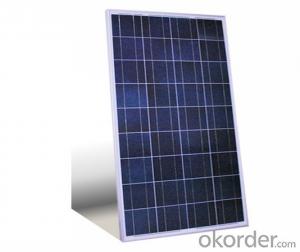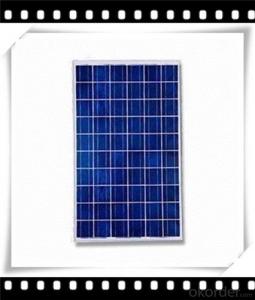10W Poly Solar Panel for Factorio - Small Solar Panel Manufacturer in China CNBM
- Loading Port:
- Qingdao
- Payment Terms:
- TT OR LC
- Min Order Qty:
- 10 set
- Supply Capability:
- 300000 set/month
OKorder Service Pledge
OKorder Financial Service
You Might Also Like
Polycrystalline Solar Modules
CNBM offers a range of small, medium and large polycrystalline solar modules, designed for a range of requirements.
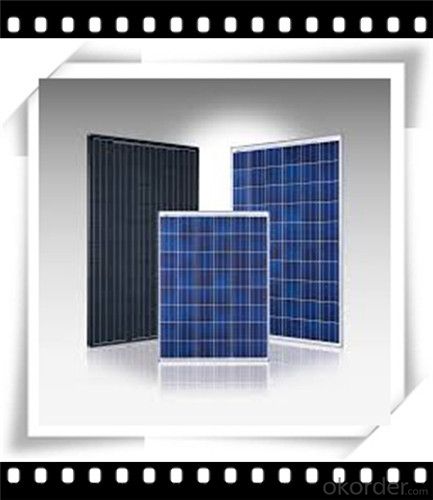
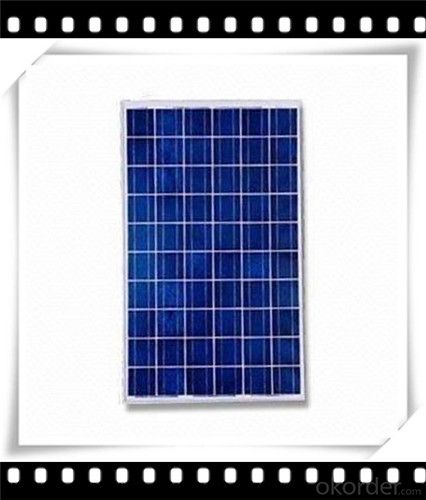
Specifications:
Tolerance | +/-3% |
Cell | Polycrystalline silicon solar cells (156 x 156mm) |
N0. of Cells | 60 (10 x 6) |
Dimension of Modules (mm) | 1650 x 990 x 40 |
Weight (kg) | 25.5 |
Limits:
Operating Temperature | -40~+85? |
Storage Temperature | -40~+85? |
Maximum System Voltage | 1000 VDC max. |
Hail Impact | Diameter of 28mm with impact speed |
Temperature and Coefficients:
NOCT | 48C+/-2? |
Voltage temperature coefficient (%/K) | -0.35 |
Current temperature coefficient (%/K) | 0.05 |
Power temperature coefficient (%/K) | -0.45 |
Characteristics:
Model: | SGM-200P | SGM-210P | SGM-220P |
Max-power voltage Vmp (V) | 29.2 | 29.4 | 29.41 |
Max-power current Imp (A) | 6.85 | 7.14 | 7.48 |
Open-circuit voltage Voc (V) | 36.5 | 36.69 | 36.9 |
Short-Circuit Current Isc (A) | 7.28 | 7.6 | 7.93 |
Max-power Pm(W) | 200 | 210 | 220 |
Model: | SGM-230P |
Max-power voltage Vmp (V) | 29.8 |
Max-power current Imp (A) | 7.72 |
Open-circuit voltage Voc (V) | 37.31 |
Short-Circuit Current Isc (A) | 8.19 |
Max-power Pm(W) | 230 |
STC: Irradiance 1000W/m2, module temperature 25?, AM-=1.5
Poly Crystalline Solar Panels Specifications Range
Maximum Power (Pm) | Dimension | Weight | Operating Voltage (Vmp) | Operating Current (Imp) | Open Circuit Voltage (Voc) | Short Circuit Current (Isc) |
0.45W | 140x80x10mm | 0.08kg | 3.3V | 150mA | 4.6V | 160mA |
1.0W | 162x140x10mm | 0.16kg | 7.5V | 150mA | 10.3V | 160mA |
4.5W | 269x251x23mm | 0.8kg | 16.5V | 0.27A | 20.5V | 0.3A |
10W | 420.1×268.9×22.6mm | 1.92kg | 17.5V | 0.58A | 20.5V | 0.6A |
20W | 425x502x50mm | 3.0kg | 16.8V | 1.19A | 21.0V | 1.29A |
30W | 593x502x22.6mm | 3.9kg | 16.8V | 1.78A | 21.0V | 1.94A |
40W | 655x537x50mm | 5.75kg | 17.3V | 2.31A | 22.1V | 2.54A |
50W | 839x537x50mm | 6.0kg | 17.5V | 2.9A | 21.8V | 3.17A |
65W | 1111x502x50mm | 7.2kg | 17.6V | 3.69A | 22.1V | 3.99A |
80W | 1204x537x50mm | 7.7kg | 17.6V | 4.55A | 22.1V | 4.8A |
- Q: Are there any maintenance requirements for solar panels?
- Yes, solar panels do require some maintenance. Regular cleaning of the panels to remove dirt, dust, and debris is recommended to ensure optimal performance. Additionally, it is important to inspect the panels for any signs of damage or wear, and if necessary, have them repaired or replaced. Monitoring the system's performance and checking the connections regularly is also crucial for identifying any issues.
- Q: can this amount of solar charge these batteries.
- Wow I think that your battery are too big or in othercase your solar system panels are too small. But making some calcs if you connect your panels in parallel you will have 30 Amps of Recharge for your batteries. Assuming that your batteries are discharged to .75 V/C you will need at least (. x Ah removed)/Recharge Amps = (. x 550Ah)/30A, that means that you will need 20 Hours to recharge your batteries Literally this is imposible to have fully charged your batteries for a proper application you will need 65 Amps from your panels to recharge your batts in 4 hours or de-rate your batteries to 00 Ah
- Q: Can solar panels be used in areas with high levels of snow or ice?
- Yes, solar panels can be used in areas with high levels of snow or ice. However, their efficiency may be reduced during winter months due to reduced sunlight exposure and accumulation of snow or ice on the panels. To mitigate this, solar panels can be installed at an angle to allow snow to slide off, or they can be equipped with heating systems to melt the snow or ice. Additionally, regular maintenance and cleaning may be required to ensure optimal performance in snowy or icy conditions.
- Q: Can solar panels be installed on windows or glass surfaces?
- Yes, solar panels can be installed on windows or glass surfaces. There are specialized solar panels designed specifically for this purpose, known as transparent solar panels or solar windows. These panels are designed to allow light to pass through while still generating electricity.
- Q: I found portable solar panels used for boats etc. and was wondering how I could effectly use them for my home instead. If you have used them in the past, please tell how they worked (good or bad).
- I think you'd be disappointed. But you might be able to take an RV, park it close to your house in the sunshine, run an extension cord from your house connected to a small fan and run the fan for free. I don't think it's worth the expense of the RV, but that's me. If you have the money, flaunt it baby, flaunt it.
- Q: Can solar panels be installed on military bases or installations?
- Yes, solar panels can be installed on military bases or installations. In fact, many military bases around the world have already adopted solar energy as a means of reducing their reliance on traditional fossil fuels and increasing their energy security. Solar panels provide a sustainable and cost-effective source of electricity, which aligns with the military's efforts to improve environmental sustainability and operational efficiency. Additionally, solar installations on military bases can enhance energy resilience and readiness by reducing vulnerability to power outages and disruptions.
- Q: How much energy can a solar panel generate?
- The amount of energy a solar panel can generate depends on various factors such as its size, efficiency, location, and weather conditions. On average, a standard solar panel can generate between 250 to 400 watts of electricity per hour under ideal conditions. However, it's important to note that energy production may vary throughout the day and across different seasons.
- Q: Basically I need a custom solar panel created. I won't go into detail but the dimensions need to be around 4''x2.5'' and be as thin as possible.
- There's no way that home built system that will generate enough power to run your home off the grid. That's all hogwash! No wind = no electricity generated. No sun = no electricity generated. I'm looking into a grid tie solar system. I'm still working out the math for my home. They are expensive ($20k - $50k) before tax credits, but they have been designed by engineers, not back yard, shade tree wanna-be engineers. They will put power into the grid during the day (making your meter run backwards) and you'll draw the power back at night (when there's no sun). This is perfectly legal. It must be installed by power company approved techs. That's how power companies are going to meet their green energy mandates for the future. You'll generate power for the power company and get paid wholesale prices for it (during the day). But you'll buy it back at retail (at night)
- Q: Can solar panels be used to power a water pump?
- Yes, solar panels can be used to power a water pump. Solar panels convert sunlight into electricity, which can be used to power various devices and appliances, including water pumps. This allows for a sustainable and environmentally friendly way to pump water without relying on traditional energy sources.
- Q: My dad owns a restaurant, and we are doing farely well, but we were thinking on installing solar panels to minimize electricity costs (and of course make it greener). My dad would like to hear some numbers on the price in today (August 29/202) and savings he could possibly make over the years. So In Total Here's What I'm Asking:) Would it be hard to install?2) Maintanence?3) Monthly Expense? (None?)4) Price?5) Savings over time?6) Pros/ConsThank you so much!
- Different solar companies install these panels. Check your local area for a free quote. If you don't already have a solar panels for a hot water system yet, consider a thermosiphon design, then you need no electricity to produce hot water. All the other designs require some electricity.
Send your message to us
10W Poly Solar Panel for Factorio - Small Solar Panel Manufacturer in China CNBM
- Loading Port:
- Qingdao
- Payment Terms:
- TT OR LC
- Min Order Qty:
- 10 set
- Supply Capability:
- 300000 set/month
OKorder Service Pledge
OKorder Financial Service
Similar products
Hot products
Hot Searches
Related keywords
